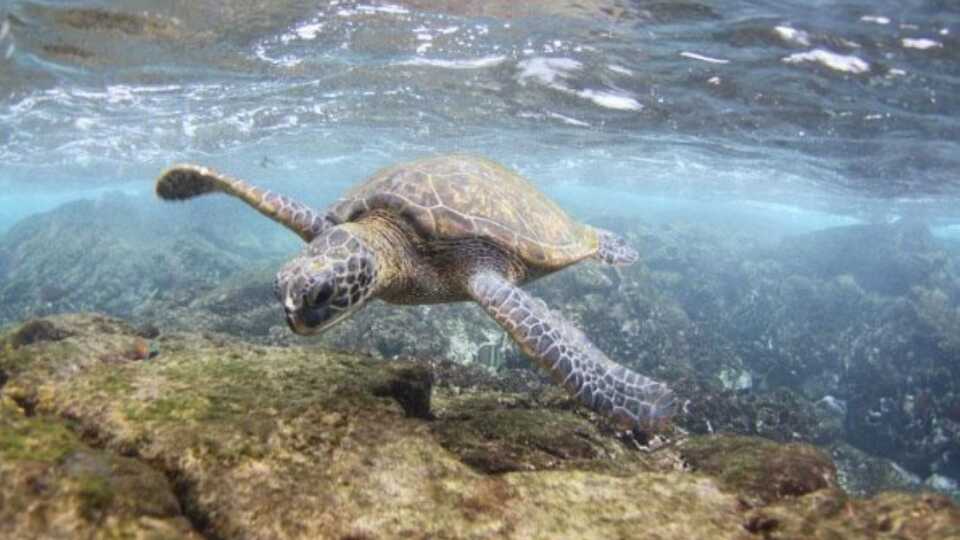Science News
Healthy Green Sea Turtles

Sea turtles are in trouble worldwide. To save them, scientists are racing to understand more about their habits. Most sea turtles begin their lives on a beach, heading straight for the open ocean where they can drift for thousands of miles. Sea turtles cover hundreds and even thousands of miles in long migrations between their foraging and breeding grounds. Females often return to the same beach where they were born to lay their eggs. Throughout their long lives, threats—often human-caused—put many species on the IUCN’s endangered list.
Scientists want to better understand sea turtles habits and use that knowledge to protect the habitats they frequent. In that vein, here at Science Today, we’ve covered loggerheads’ early years, and satellite tracking of hawksbills and green sea turtles. And now a new study adds to this. Publishing in PLoS ONE today, a group of South American researchers have explored two foraging regions off the coast of Peru—two protected habitats where green sea turtles appear to congregate.
Green sea turtles aren’t obviously green—they’re named for a green layer of fat between their organs and the bottoms of their shells. Their endangered status protects them from fishing, yet they are caught as bycatch, fished illegally, and threatened by pollution and development of their nesting beaches.
Green turtles differ from their other sea turtle relatives—while the juveniles are carnivores, eating jellies and squid like other sea turtle species, the adults are herbivores, grazing on sea grass and algae.
The team of South American researchers looked at two sites, both at the edge of the continental shelf. One study site is a nutrient-rich, cooler upwelling region called Paracas, and the other is a warmer-water area called El Ñuro.
The researchers found healthy, fast-growing turtle populations at both sites. Farther north, the warm, less productive El Ñuro site hosted a population mostly composed of young adults. At the cold, nutrient-rich Paracas site off the southern coast, scientists found a population primarily composed of juveniles and no adults. Both populations likely follow the food sources, staying for just a couple of months or up to two years.
The study authors view these populations as cause for hope: the conditions found in Peruvian coastal waters might contribute to the recovery of east Pacific green turtles. Despite the protection status for both areas, these two turtle populations face threats from pollution, bycatch, and illegal catch, and the researchers suggest conservation measures may be necessary to maintain current populations.
Many people and organizations up and down the Pacific coast are working with local fishermen to protect sea turtles. Academy research associate Wallace J. Nichols works with Mexican fishermen, and Joanna Alfaro-Shigueto of ProDelphinus works in Peru. She was also one of this year’s speakers at the Wildlife Conservation Expo. You can learn more here and here.
Image: NOAA Pacific Islands Fisheries Science Center